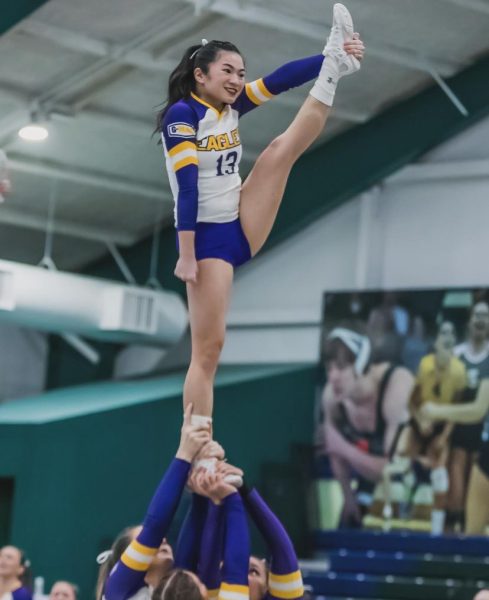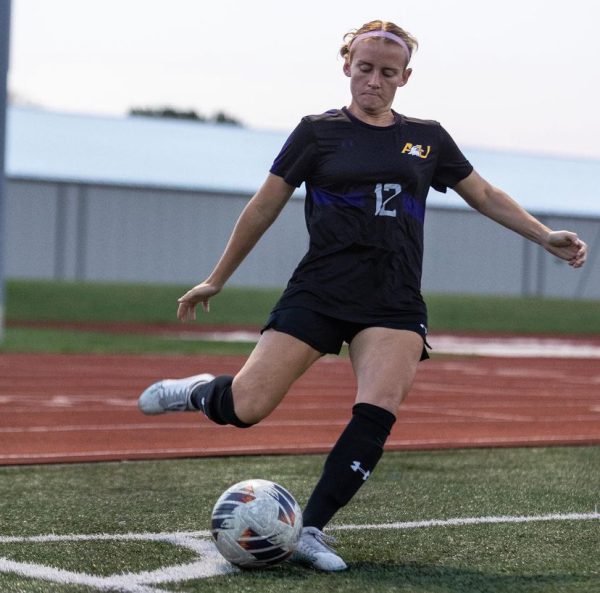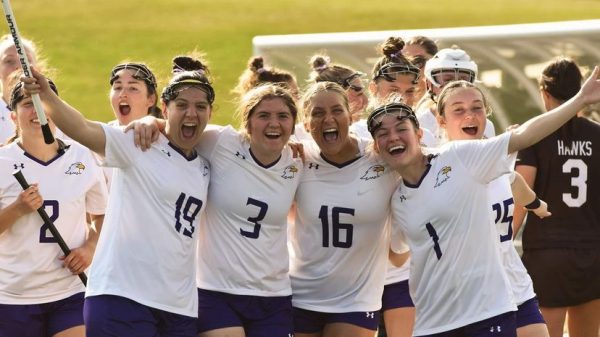Ashland to stay in GLIAC
February 26, 2018
The Ashland University Athletic Department has decided to remain in the Great Lakes Intercollegiate Athletic Conference after discussing the possibility of switching their conference affiliation.
In 2015, a number of the Ohio private schools, such as Ohio Dominican and Findlay, left the GLIAC and headed into the Great Midwest Athletic Conference.
This prompted the same conversation within the Ashland administration as they began to weigh in on whether or not Ashland would follow suite.
“This is a conversation that really goes back to 2015 when a number of our Ohio private schools moved from the GLIAC to the GMAC,” President Carlos Campo said. “That’s what really initiated the conversation and we promised then when we decided not to move back in 2015 that we would continue to review our conference affiliation on a regular basis.”
Then in 2017, Tiffin University, the other Ohio school remaining in the GLIAC, announced that they too would be moving to the GMAC starting in the fall of 2018.
The GLIAC also announced last year that Wisconsin-Parkside would be transitioning into the conference as well. This decision began to pull Ashland further and further away from Ohio and was a major factor in why the university reviewed their status.
Dr. Campo said that this review was nothing out of the ordinary and that Ashland will routinely review its standing in the conference to ensure that they are doing what is best for the student athletes involved.
The main things that the athletic department was looking for where how much travel cost would be involved if they were to stay in the conference and how the long travel days would affect students missing class.
The athletic department put together a task force whose main goal was to collect factual information and then present the information to President Campo.
Dr. Campo said that conferences are pieced together based on the schools location, their mission and their competitiveness.
Ashland has some differences compared to other schools in the GLIAC in their location and sometimes their mission because of being one of three private schools in the conference, but the competitiveness is in perfect alignment.
“We realize that competition is one of the main drivers that led to this decision,” Campo said. “We do feel like the GLIAC keeps us in a more competitive, probably the most competitive conference within our region, so that was the main driver. We did not want to take a step back competition wise.”
Athletic Director, Al King agreed with this sentiment saying that Ashland remaining in the GLIAC is not a consolation prize but rather a benefit because AU can continue to compete in one of the top conferences in the country.
As a part of the decision making process, every coach at AU received a survey to fill out to make note of their opinion on the issue and the athletic department also reached out to the Student Athlete Advisory Committee that represents athletes on campus to seek their opinion.
King went on to say that the GLIAC has been a major factor in the recent success of Eagle athletics.
“Our success in athletics, some of it is tied to the GLIAC, there is no question,” King said. “We got better years ago when we joined the GLIAC. It made us be better on the field, in the classroom all the ideas we have brought, community service everything, we got better because of that association.”
The GLIAC has also greatly benefited from Ashland being a part of their conference and they did their part to convince Ashland to stay.
“We were very pleased to see the way the conference really reached out to us,” Campo said. “The Commissioner came to campus a couple of time and the chairman came with a couple of representatives from other schools and they just said we know Ashland is a great asset to the GLIAC and we want you to stay.”
The GLIAC has also amended the conference scheduling to help limit the travel cost Ashland will have to cover.
The conference basketball schedule has been moved from 24 games to 20 games. This will allow Ashland to schedule more non-conference games that are in closer proximity then some of the Michigan schools in the GLIAC.
The football schedule will also be amended so that Ashland only has to go to the Upper Peninsula once every three seasons.
King also mentioned that the benefits of staying in the GLIAC go beyond the competition on the field.
“In the GLIAC you’re in a league where the other things off the court or off the field are done so well,” King said. “The medical services, the gameday environment, the gameday services, I mean I go somewhere and the team is gonna get on and off the floor without any problems. Everything is going to be handled in a high class way.”
King said that this is a reason that often goes unnoticed when talking about the possibility of switching conferences.
After researching the issue and talking the opinions of coaches, athletes and many others, the university concluded that they simply did not have enough information to make an informed decision.
“One of the things that we concluded was we just don’t have enough hard data,” Campo said. “We can project some of these things but two years from now we will really have hard data really take a look at the cost and see what missed class time is really all about.”
Ashland is planning to revisit the issue of realignment in 2020 and by that time they hope to have hard numbers on what the travel cost is and what affect the travel has on students.
“One of the things that we pledged is that we are not going to be intransigent during this process,” Campo said.” We’ll continue to be open continue to do the assessment that we need to do to ensure that athletics plays the right role in our overall mission.”










